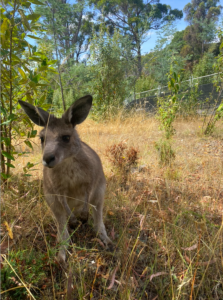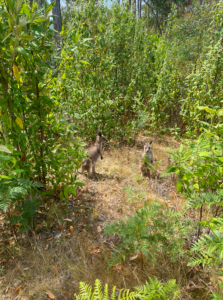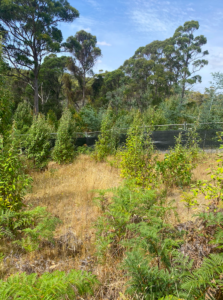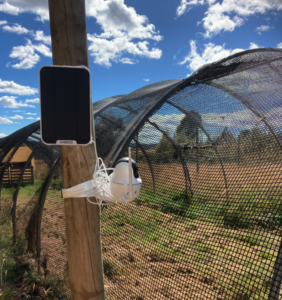Wildlife Rehab and Release projects completed
Wildlife rehabilitation is a specialised skill and while it can be very rewarding, it can also be time-consuming and emotionally taxing.
Through the generous support of WIRES, Saffire Freycinet and regular donors, the Wildlife Rehab and Release cause of Wildcare’s Tasmanian Nature Conservation Fund supports the rehabilitation and release of Tasmania’s injured and orphaned native animals by dedicated registered volunteer rehabilitators.
Projects may include training, enclosures, and support for volunteer rehabilitators.
Outlined below, are four projects funded through this cause.
Mobile Pre and Soft-Release Enclosures for kanamaluka Wildlife Rehabilitation Centre – Purchase and erection of temporary fencing and accessories.
As this is an ongoing project, aimed at benefiting many animals over a long period of time (the lifetime of the fencing purchased), the implementation is also ongoing.
45 fencing panels were erected and serve both as a pre-release enclosure for Forester kangaroos and a soft-release enclosure for Bennetts wallabies. This exceeds minimum enclosure sizes set out in the ‘Best Practice Guidelines for Wildlife in Tasmania’.
The other 6 fence panels have been reserved as quickly erected temporary enclosure space for large waterbirds and seabirds, such as swans and pelicans.
A crew of eight people from Corrective Services contributed their time to moving and erecting the fencing at the first release location. Two of these were supervisors and six were participants in the Community Service Program.
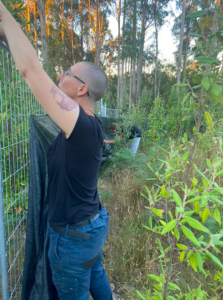 Three regular centre volunteers also helped set up the enclosure space – making the land safe and accessible to the animals by clearing weeds, excess dead ferns, and debris; and setting up shelter space and water stations.
Three regular centre volunteers also helped set up the enclosure space – making the land safe and accessible to the animals by clearing weeds, excess dead ferns, and debris; and setting up shelter space and water stations.
Fulltime on-site volunteers Jess and Duncan, with the help of a regular centre volunteer attached 120m of shade cloth to the inside of the enclosure for animal privacy and safety.
Ongoing maintenance of the current enclosure and future enclosures made from the fencing materials will be conducted by fulltime onsite volunteers and regular centre volunteers.
There are currently eight Bennetts wallabies residing in the pre-release enclosure and they will be soft-released directly from the enclosure at the end of March. Because the soft release enclosure was erected directly into an ideal environment (similar to where the wallabies will permanently reside post release), to which they will be well suited and familiar, stress levels will be lower and survival rates higher than animals who are hard-released or soft-released in less than ideal locations.
Funding for this project was made possible by the support of WIRES.
The enclosure space will be used to soft-release 12 – 14 Tasmanian pademelons over the autumn/winter period. After this it will likely be deconstructed and moved to another location for future releases. As intended, this will ensure that one area is not being over populated with animals.
Wildlife care and rehabilitation – Jenna
 Wildlife carer/rehabilitator Jenna’s aim is to raise orphan joeys in a stress free environment to be healthy, confident and independent, with their natural skills honed so they can be released successfully back into their wild environment with the best possible chance of survival.
Wildlife carer/rehabilitator Jenna’s aim is to raise orphan joeys in a stress free environment to be healthy, confident and independent, with their natural skills honed so they can be released successfully back into their wild environment with the best possible chance of survival.
The equipment and monitoring cameras acquired through funding from the TNCF helped her to achieve this aim and have ultimately benefited the joeys in her care.
Rehab aviary monitoring cameras – John
Installation of cameras on north-east Tasmania’s first large Raptor rehabilitation aviary located at Lilydale.
Cameras were installed to aid in the observation birds occupying the facility. Raptors are prone to ‘masking’ their symptoms so as to appear less vulnerable, so remote observation gives a more useful profile of their recuperation.
Funding for this project was made possible by the support of WIRES.
For details of fourth pre-release project, go to this article.

